HEATING REINVENTED - WITH CARBON
Infrared heating systems installed in the floor, wall, or ceiling distribute pleasant warmth at low heating costs.
The heating solutions from Carbon Heating Systems can be used as underfloor, wall, or ceiling heaters, and use the same heating method as our sun, beneficial infrared radiation. In addition to a uniquely healthy indoor climate, our products impress with their low running and investment costs.
Heat on demand - Fast heating - Very easy to operate
The secret of this technology: an innovative carbon coating. All our products are printed over the entire surface with this patented carbon coating and emit beneficial infrared radiation when a voltage is applied - just like our sun. This happens in minutes and leads to maximum efficiency and heat homogeneity. We heat floors, walls, and ceilings with three different products - perfectly matched to the respective areas.

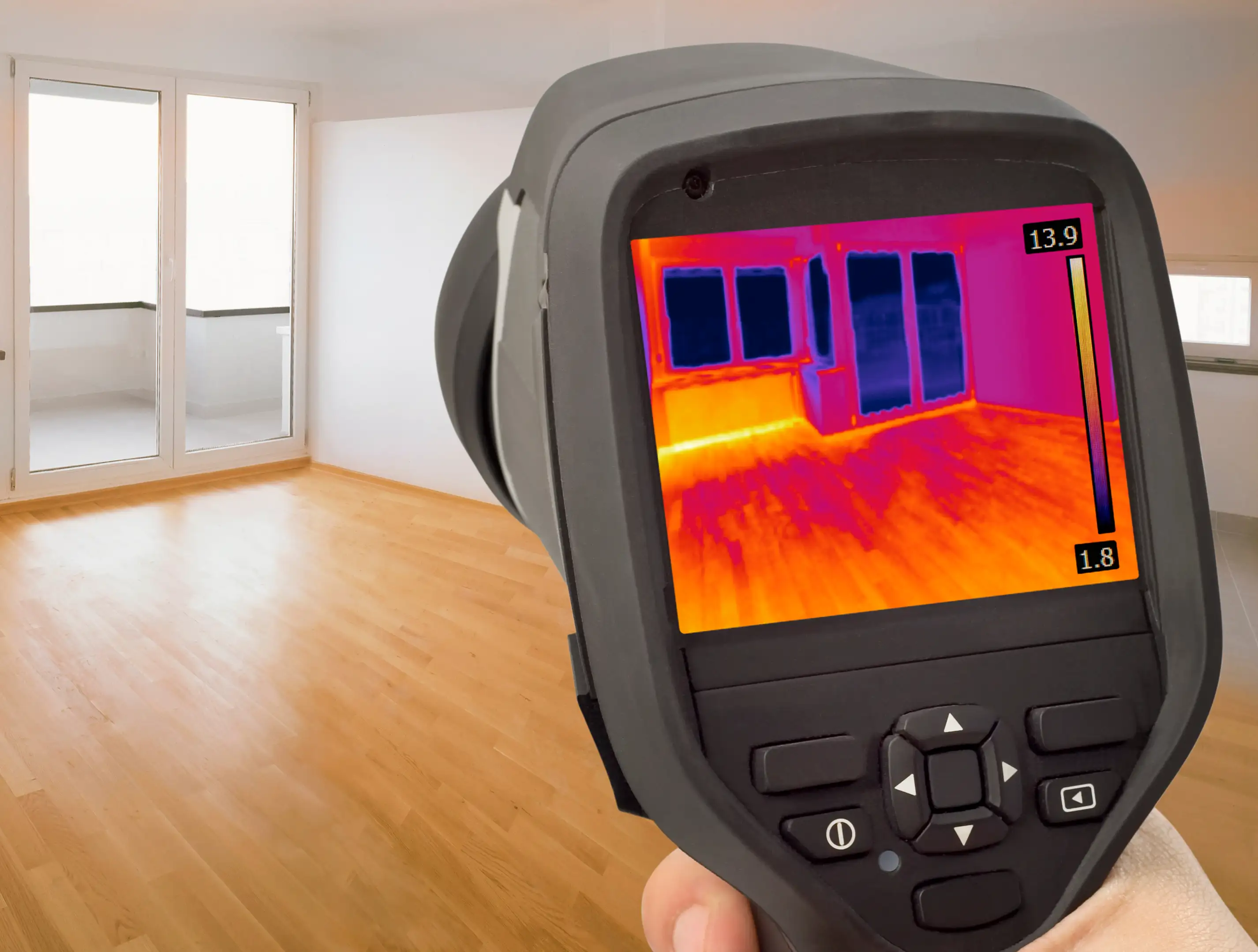
Mode of action
The installation of a heating system always involves a large investment. It is therefore important to our company to explain in detail how our heating systems work, so that you can see the technology and the effect for yourself.
What exactly is infrared radiation?
Infrared radiation is, in short, heat radiation. It can be thought of as an electromagnetic wave. However, the length of the wave is decisive. A very short wave, for example, would be one of an X-rays, which is dangerous for humans. A very long wave would be, for example, a radio wave, which, as we all know, we can hear. In between, with an average wave length, are, among others, the waves of infrared radiation. The special feature here is that they warm us.
We know this phenomenon when we stand in a sunlit place on a cold day. We feel the pleasant warmth of the sun on our face and body ... It is cold, but we feel pleasantly comfortable in the sun's rays. But many people confuse UV radiation with infrared radiation. Both come from the sun, but that's the only thing they have in common. UV radiation consists of shorter waves and is responsible for our skin turning brown or red after sunbathing ... it is generally dangerous. The waves of infrared radiation, on the other hand, are longer and, apart from the warming effect, have a number of healthy influences on the human body which, for example, can also be used therapeutically for muscle and joint complaints.
How can infrared radiation be used for building heating?
Our infrared heating products have two features that distinguish them from other types of heating:
1. They are panel heating systems, i.e. floor, walls, or ceiling heat the room without any radiator or other protruding radiators.
2. Infrared radiation is used primarily to heat objects and not the air as is the case with all convection-based heating systems.
Our products are coated with a patented carbon paste which heats up and emits infrared radiation when a voltage is applied.
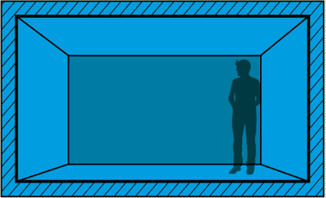
In the picture on the left, you see an unheated room, whereby the left wall is equipped with a wall heating Carbon heating system.
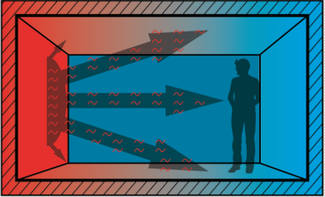
When the wall heating is switched on, the wall heats up evenly to the temperature set on the thermostat and transfers heat energy to all other walls, objects, and people in the room.
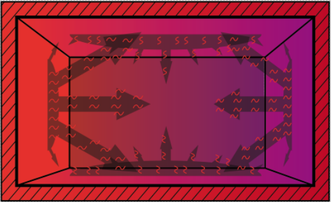
The walls, including objects and people in the room, absorb some of this heat energy, i.e. they heat up. At the same time, they pass on a part of the received heat flow; this effect is called secondary radiation.
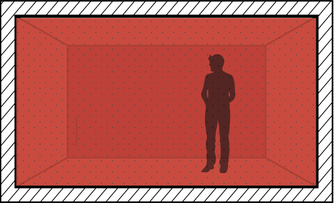
This procedure is repeated until the surface of all walls, objects, and people have the same temperature, because only then does the heat equalisation current ceases. It should be noted that the air itself is not directly heated. It remains pleasant.
If all the walls, the floor, and the ceiling have the same temperature, we are warmed according to the principle of heat transfer. The second law of thermodynamics states that whenever two objects of different temperatures are near each other, there is a flow of heat from the warm to the cold object. This heat flow continues until the temperature levels of both objects have equalised. Humans perceive an ambient temperature of 20-22 degrees Celsius as very pleasant, since this also represents their surface temperature when they are dressed and thus there is virtually no heat exchange (flow). If we humans are warmer than our surroundings, we emit heat in the form of infrared radiation and start to freeze. In the opposite case, we sweat when the ambient temperature is higher than the one at which we are comfortable. Sweating is then supposed to cool our body down a bit.
MEDICAL ASPECTS
The therapeutic benefits of infrared radiation have long been known. Heat has a healing and soothing effect on pain, inflammation, joint pain, and muscle tension, and strengthens the immune system. Infrared radiation penetrates the skin only slightly, but immediately releases the heat to the adjacent tissue layers. Through the blood and lymph flow, the warmth can also reach deeper regions of the body and internal organs. In addition, after only a short application, an increase in flow of blood volume can be observed. The evaluation of various measurements of vitality and well-being, such as blood volume and heart rate variability (HRV), confirms that infrared radiation has a stress-reducing effect. In the meantime, a purifying effect has also been proven, i.e. the flushing out of toxic substances from the body is promoted.
A study by the biophysical testing laboratory Paul Sommer has shown: "The heating principle of an infrared radiant heater corresponds to the principle of natural solar radiation, which health and the human organism also demand in their living space".


